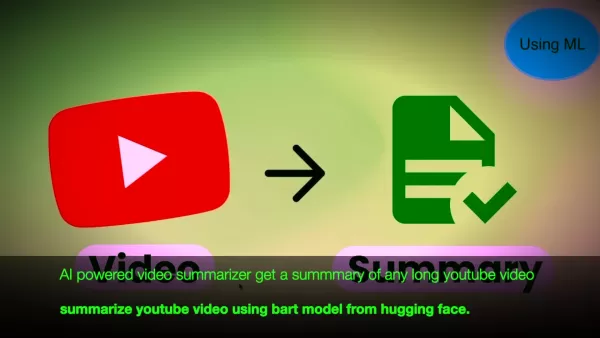5 Strategies for Enhancing Team Management in AI-Driven Enterprises

Artificial intelligence (AI) is poised to revolutionize the workplace, but there's a noticeable lack of agreement on how employees will adapt to these sweeping changes. Recent studies indicate that only 30% of C-suite leaders feel confident in their ability to manage change, and a mere 25% believe their teams are ready to dive into this new era.
So, what's the game plan for senior executives aiming to navigate their teams through the AI transformation? Here are strategies from five business leaders on effectively managing teams in an AI-driven enterprise.
1. Cultivate Staff Resilience
LinkedIn's chief product officer, Tomer Cohen, emphasizes the importance of building resilience among staff to handle the fast-paced changes AI brings to the workplace. "You've got to be ready to learn quickly and be okay with a constantly shifting environment," he advises. "Best practices today might not hold tomorrow."
Cohen stresses that managers should focus on helping employees develop the ability to unlearn and relearn constantly. "If you can master this, you're likely to stay ahead in the game," he notes. However, he warns that those who don't build this resilience may find the evolving workplace frustrating and challenging, as change is not only imminent but unpredictable and faster than ever before.
2. Embrace the Transformation
Bev White, CEO of Nash Squared, believes AI should be integrated into everyone's toolkit without fear. "Encourage your team to see AI as a game-changer, something to explore and experiment with," she suggests. White advocates for creating an environment where team members share their experiences and learn from each other, fostering a culture of co-coaching.
She likens managing in an AI-enabled workplace to assembling furniture. "When you build it yourself, you feel more connected and satisfied with the result," White explains. By engaging with AI and achieving small victories, employees will gain confidence and appreciate the technology's potential. She encourages leaders to be open about their own experiences with AI, acknowledging that while some may feel threatened by it, new jobs will also emerge.
3. Highlight the Advantages
Tobias Sammereyer, team lead for performance engineering at XXXLutz, emphasizes educating staff on AI's benefits. "Start a community, share experiences, and show how AI can accelerate their work," he suggests. Sammereyer points out that as the workforce shrinks due to retiring baby boomers, AI can help do more with less, especially in the IT sector.
He gives practical examples of how AI can boost productivity, such as generating quick email responses or assisting in writing complex DQL statements for IT observability. "It's all about making everyday tasks quicker and more efficient," he notes.
4. Make Employees Comfortable
Adobe CIO Cindy Stoddard focuses on managing the human aspect of AI integration. "You need to make people comfortable and help them understand AI," she says. Stoddard acknowledges that everyone learns differently and stresses the importance of tailoring educational approaches to individual styles.
She debunks the oversimplified notion that robots will replace humans, emphasizing instead that AI should be seen as a tool to create value. "Individuals who adapt will thrive, but those who don't may find themselves left behind," Stoddard warns, underscoring the enduring value of human creativity and connection.
5. Track Your Progress
Jeff Palmiero, technical vice president at Raymond James, advises measuring the impact of AI on staff productivity. "Use metrics to demonstrate how AI is boosting your teams' efficiency," he suggests. Palmiero emphasizes the importance of quantitative measures to ensure that automation enhances, rather than replaces, human contributions.
He advocates for keeping human developers in the loop to maintain software quality amidst increasing automation. "AI should augment the skills of experienced developers, helping them with routine tasks and allowing them to focus on higher-level contributions," Palmiero explains.
By following these strategies, senior executives can guide their teams through the AI transformation with confidence, ensuring both personal and organizational growth.
Related article
 US to Sanction Foreign Officials Over Social Media Regulations
US Takes Stand Against Global Digital Content Regulations
The State Department issued a sharp diplomatic rebuke this week targeting European digital governance policies, signaling escalating tensions over control of online platforms. Secretary Marco
US to Sanction Foreign Officials Over Social Media Regulations
US Takes Stand Against Global Digital Content Regulations
The State Department issued a sharp diplomatic rebuke this week targeting European digital governance policies, signaling escalating tensions over control of online platforms. Secretary Marco
 Ultimate Guide to AI-Powered YouTube Video Summarizers
In our information-rich digital landscape, AI-powered YouTube video summarizers have become indispensable for efficient content consumption. This in-depth guide explores how to build a sophisticated summarization tool using cutting-edge NLP technolog
Ultimate Guide to AI-Powered YouTube Video Summarizers
In our information-rich digital landscape, AI-powered YouTube video summarizers have become indispensable for efficient content consumption. This in-depth guide explores how to build a sophisticated summarization tool using cutting-edge NLP technolog
 Atlassian Acquires The Browser Company for $610M to Boost Developer Tools
Atlassian, the enterprise productivity software leader, has announced plans to acquire innovative browser developer The Browser Company in a $610 million all-cash transaction. The strategic move aims to revolutionize workplace browsing by integrating
Comments (9)
0/200
Atlassian Acquires The Browser Company for $610M to Boost Developer Tools
Atlassian, the enterprise productivity software leader, has announced plans to acquire innovative browser developer The Browser Company in a $610 million all-cash transaction. The strategic move aims to revolutionize workplace browsing by integrating
Comments (9)
0/200
![JackAllen]() JackAllen
JackAllen
 September 5, 2025 at 10:30:41 AM EDT
September 5, 2025 at 10:30:41 AM EDT
团队管理在AI时代确实需要新思路啊...但看到只有30%的高管对变革管理有信心,突然理解了为什么我们公司数字化转型一直卡在半路了 😅 这种数据不就是AI实施的最大障碍吗?


 0
0
![GeorgeWilliams]() GeorgeWilliams
GeorgeWilliams
 August 6, 2025 at 7:01:00 PM EDT
August 6, 2025 at 7:01:00 PM EDT
AI in team management sounds cool, but only 25% of execs think they can handle it? 😅 I bet most teams are just winging it with these new tools!


 0
0
![RogerGonzalez]() RogerGonzalez
RogerGonzalez
 July 27, 2025 at 9:20:54 PM EDT
July 27, 2025 at 9:20:54 PM EDT
AI in team management sounds cool, but only 25% of leaders are ready? Yikes, feels like most are just winging it! 😅 Hope these strategies help bridge the gap.


 0
0
![MatthewBaker]() MatthewBaker
MatthewBaker
 July 23, 2025 at 12:59:47 AM EDT
July 23, 2025 at 12:59:47 AM EDT
This article got me thinking—AI's shaking up workplaces, but only 30% of execs are ready? That's wild! 😅 I wonder how smaller teams can keep up with all this tech chaos.


 0
0
![DouglasMitchell]() DouglasMitchell
DouglasMitchell
 May 8, 2025 at 6:33:52 PM EDT
May 8, 2025 at 6:33:52 PM EDT
¡Muy interesante! Me ha dado algunas ideas sobre cómo gestionar mejor mi equipo en un entorno impulsado por la IA. Sin embargo, algunas partes eran un poco densas para mí.


 0
0
![DavidGonzález]() DavidGonzález
DavidGonzález
 May 8, 2025 at 11:24:01 AM EDT
May 8, 2025 at 11:24:01 AM EDT
This article gave me some great insights into managing teams in an AI-driven world. It’s not just about tech, it’s about people too. Some points were a bit repetitive though, maybe adding more case studies could help.


 0
0

Artificial intelligence (AI) is poised to revolutionize the workplace, but there's a noticeable lack of agreement on how employees will adapt to these sweeping changes. Recent studies indicate that only 30% of C-suite leaders feel confident in their ability to manage change, and a mere 25% believe their teams are ready to dive into this new era.
So, what's the game plan for senior executives aiming to navigate their teams through the AI transformation? Here are strategies from five business leaders on effectively managing teams in an AI-driven enterprise.
1. Cultivate Staff Resilience
LinkedIn's chief product officer, Tomer Cohen, emphasizes the importance of building resilience among staff to handle the fast-paced changes AI brings to the workplace. "You've got to be ready to learn quickly and be okay with a constantly shifting environment," he advises. "Best practices today might not hold tomorrow."
Cohen stresses that managers should focus on helping employees develop the ability to unlearn and relearn constantly. "If you can master this, you're likely to stay ahead in the game," he notes. However, he warns that those who don't build this resilience may find the evolving workplace frustrating and challenging, as change is not only imminent but unpredictable and faster than ever before.
2. Embrace the Transformation
Bev White, CEO of Nash Squared, believes AI should be integrated into everyone's toolkit without fear. "Encourage your team to see AI as a game-changer, something to explore and experiment with," she suggests. White advocates for creating an environment where team members share their experiences and learn from each other, fostering a culture of co-coaching.
She likens managing in an AI-enabled workplace to assembling furniture. "When you build it yourself, you feel more connected and satisfied with the result," White explains. By engaging with AI and achieving small victories, employees will gain confidence and appreciate the technology's potential. She encourages leaders to be open about their own experiences with AI, acknowledging that while some may feel threatened by it, new jobs will also emerge.
3. Highlight the Advantages
Tobias Sammereyer, team lead for performance engineering at XXXLutz, emphasizes educating staff on AI's benefits. "Start a community, share experiences, and show how AI can accelerate their work," he suggests. Sammereyer points out that as the workforce shrinks due to retiring baby boomers, AI can help do more with less, especially in the IT sector.
He gives practical examples of how AI can boost productivity, such as generating quick email responses or assisting in writing complex DQL statements for IT observability. "It's all about making everyday tasks quicker and more efficient," he notes.
4. Make Employees Comfortable
Adobe CIO Cindy Stoddard focuses on managing the human aspect of AI integration. "You need to make people comfortable and help them understand AI," she says. Stoddard acknowledges that everyone learns differently and stresses the importance of tailoring educational approaches to individual styles.
She debunks the oversimplified notion that robots will replace humans, emphasizing instead that AI should be seen as a tool to create value. "Individuals who adapt will thrive, but those who don't may find themselves left behind," Stoddard warns, underscoring the enduring value of human creativity and connection.
5. Track Your Progress
Jeff Palmiero, technical vice president at Raymond James, advises measuring the impact of AI on staff productivity. "Use metrics to demonstrate how AI is boosting your teams' efficiency," he suggests. Palmiero emphasizes the importance of quantitative measures to ensure that automation enhances, rather than replaces, human contributions.
He advocates for keeping human developers in the loop to maintain software quality amidst increasing automation. "AI should augment the skills of experienced developers, helping them with routine tasks and allowing them to focus on higher-level contributions," Palmiero explains.
By following these strategies, senior executives can guide their teams through the AI transformation with confidence, ensuring both personal and organizational growth.
 US to Sanction Foreign Officials Over Social Media Regulations
US Takes Stand Against Global Digital Content Regulations
The State Department issued a sharp diplomatic rebuke this week targeting European digital governance policies, signaling escalating tensions over control of online platforms. Secretary Marco
US to Sanction Foreign Officials Over Social Media Regulations
US Takes Stand Against Global Digital Content Regulations
The State Department issued a sharp diplomatic rebuke this week targeting European digital governance policies, signaling escalating tensions over control of online platforms. Secretary Marco
 Ultimate Guide to AI-Powered YouTube Video Summarizers
In our information-rich digital landscape, AI-powered YouTube video summarizers have become indispensable for efficient content consumption. This in-depth guide explores how to build a sophisticated summarization tool using cutting-edge NLP technolog
Ultimate Guide to AI-Powered YouTube Video Summarizers
In our information-rich digital landscape, AI-powered YouTube video summarizers have become indispensable for efficient content consumption. This in-depth guide explores how to build a sophisticated summarization tool using cutting-edge NLP technolog
 Atlassian Acquires The Browser Company for $610M to Boost Developer Tools
Atlassian, the enterprise productivity software leader, has announced plans to acquire innovative browser developer The Browser Company in a $610 million all-cash transaction. The strategic move aims to revolutionize workplace browsing by integrating
Atlassian Acquires The Browser Company for $610M to Boost Developer Tools
Atlassian, the enterprise productivity software leader, has announced plans to acquire innovative browser developer The Browser Company in a $610 million all-cash transaction. The strategic move aims to revolutionize workplace browsing by integrating
 September 5, 2025 at 10:30:41 AM EDT
September 5, 2025 at 10:30:41 AM EDT
团队管理在AI时代确实需要新思路啊...但看到只有30%的高管对变革管理有信心,突然理解了为什么我们公司数字化转型一直卡在半路了 😅 这种数据不就是AI实施的最大障碍吗?


 0
0
 August 6, 2025 at 7:01:00 PM EDT
August 6, 2025 at 7:01:00 PM EDT
AI in team management sounds cool, but only 25% of execs think they can handle it? 😅 I bet most teams are just winging it with these new tools!


 0
0
 July 27, 2025 at 9:20:54 PM EDT
July 27, 2025 at 9:20:54 PM EDT
AI in team management sounds cool, but only 25% of leaders are ready? Yikes, feels like most are just winging it! 😅 Hope these strategies help bridge the gap.


 0
0
 July 23, 2025 at 12:59:47 AM EDT
July 23, 2025 at 12:59:47 AM EDT
This article got me thinking—AI's shaking up workplaces, but only 30% of execs are ready? That's wild! 😅 I wonder how smaller teams can keep up with all this tech chaos.


 0
0
 May 8, 2025 at 6:33:52 PM EDT
May 8, 2025 at 6:33:52 PM EDT
¡Muy interesante! Me ha dado algunas ideas sobre cómo gestionar mejor mi equipo en un entorno impulsado por la IA. Sin embargo, algunas partes eran un poco densas para mí.


 0
0
 May 8, 2025 at 11:24:01 AM EDT
May 8, 2025 at 11:24:01 AM EDT
This article gave me some great insights into managing teams in an AI-driven world. It’s not just about tech, it’s about people too. Some points were a bit repetitive though, maybe adding more case studies could help.


 0
0





























